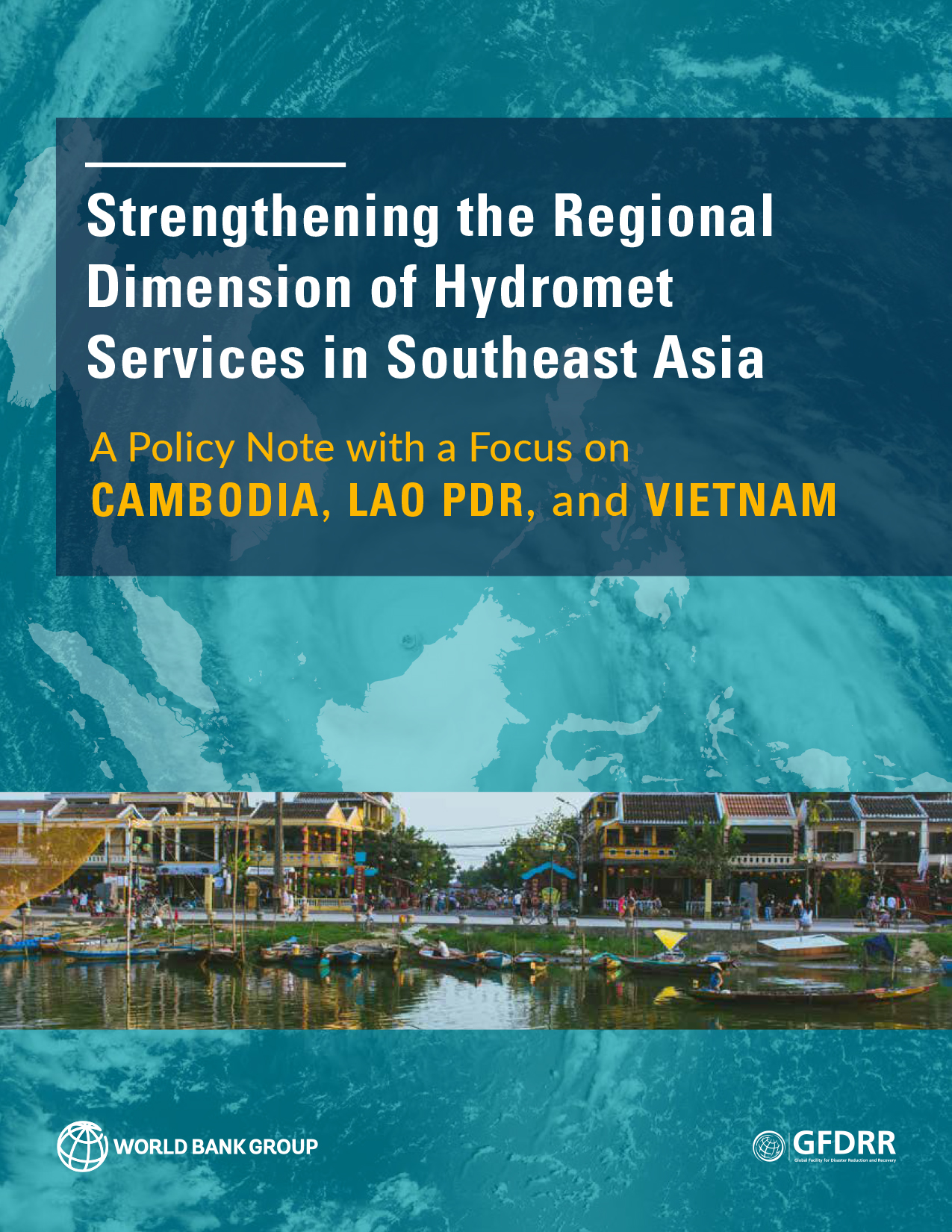The objective of this policy note is to contribute to the ongoing discussion on the potential of regional coordination in Southeast Asia. This policy note seeks to improve understanding of regional aspects of the development and delivery of hydromet services in SEA; assess regional projects and existing international initiatives to promote regional cooperation; identify gaps in these efforts; and discuss constraints on and opportunities for strengthening the regional dimension of hydromet services, focusing on Cambodia, Lao PDR, and Vietnam. The note concludes with recommendations for the way forward with short-, medium-, and long-term action plans. This analysis draws on the knowledge gathered through ongoing World Bank engagements in the region, a desk review of existing literature, and limited consultations with stakeholders.
Current hydromet conditions in Southeast Asia (SEA), along with expected future conditions highlight the need for continued investment in modernizing hydrometeorological services in the SEA region. Given that similar hazards face Cambodia, Lao PDR, and Vietnam, and that the countries have similar data and hydromet information needs, there are benefits to taking a regional approach to monitoring and forecasting hazardous hydromet conditions. The countries have different capabilities, but nonetheless, with more intense hazardous hydromet events taking place and likely to occur in the future, building a regional dimension to hydromet services could save on the cost of capital infrastructure as well as sustainable operation and maintenance. A number of initiatives that focus on the different stages of the monitoring and forecasting process could be utilized by subregional and national hydromet service providers, including in the SEA region. Existing regional frameworks and initiatives in the SEA region could help address some of the major challenges that national hydrometeorological service providers face.

